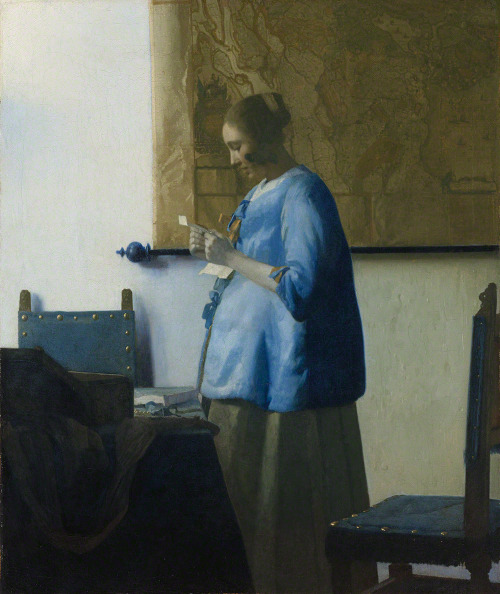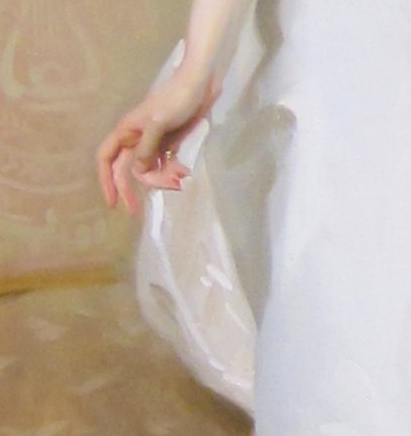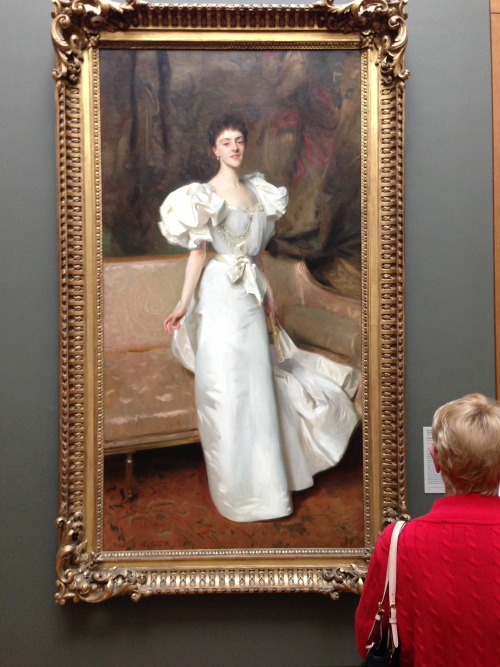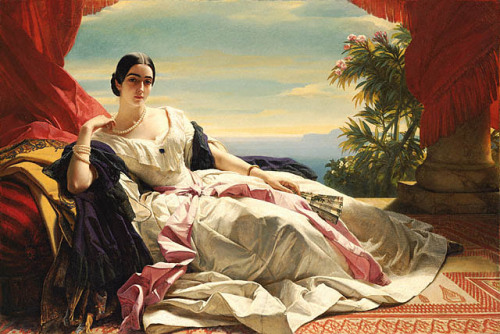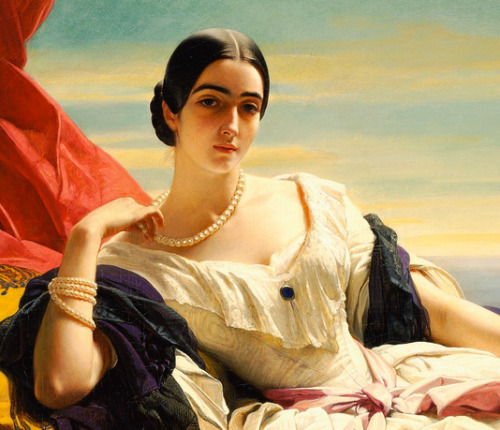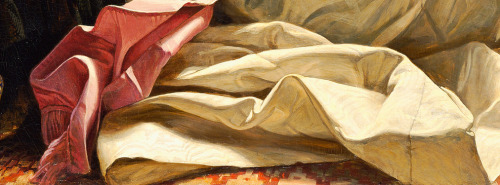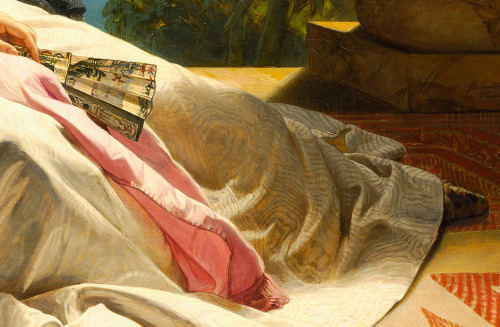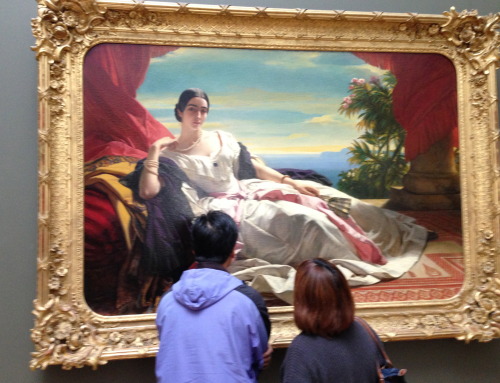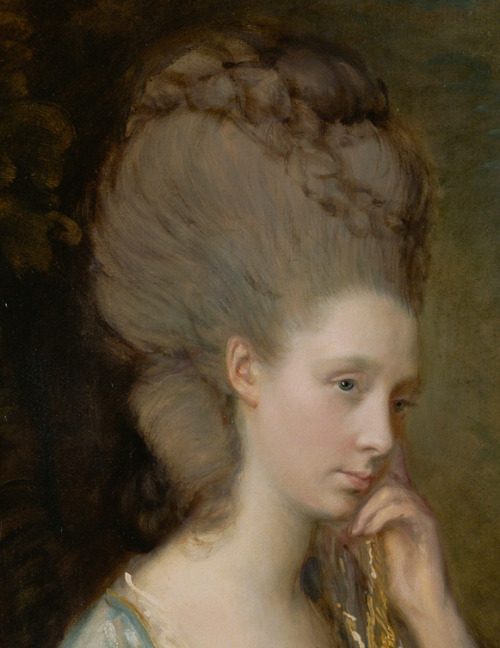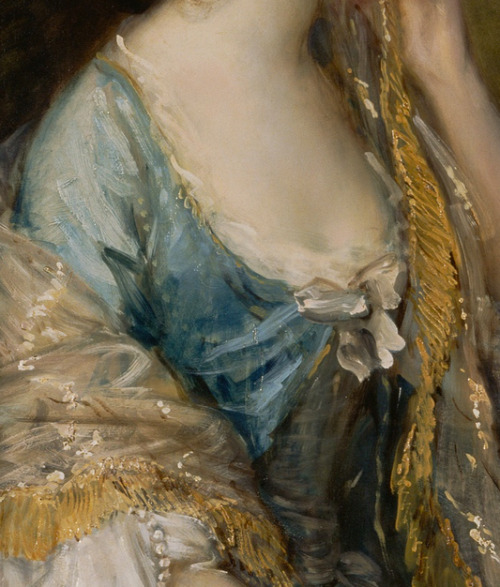bagarres: fun fact: you can explore museums on google street view I’d seen this mentioned,…
Friday, February 28th, 2014fun fact: you can explore museums on google street view
I’d seen this mentioned, but never actually tried it out. So I did, and one of the first museums I noticed that they had was the Getty in L.A.:
And I thought I recognized the large painting in the thumbnail, so I clicked through, and yeah! They chose to start the Street View tour in front of that Winterhalter painting with the crazy-awesome silk moire patterns that I geeked out about after my visit there:
And then I started getting really excited, because I was pretty sure that the portrait that started my whole Sargent obsession was on the other side of that wall, hanging in the next room behind the Winterhalter. So I hurried through the doorway and turned around and…
Aw, nuts. That’s the painting, of Thérèse, Countess Clary Aldringen, but apparently they didn’t secure the rights from its current owners, the Greif family, so it’s blurred out in Street View.
So I had to go back and stare at the images of it that I posted after my visit.
I suppose it doesn’t really matter. Looking at images of it on the computer is looking at images of it on the computer. To really feel that rush I probably need to make a trip back to the Getty and see it in person.
But I’m definitely going to spend more time doing the art museum tours in Street View. It has at least a taste of that in-person excitement.
Reposted from http://ift.tt/1dLlqW6.
